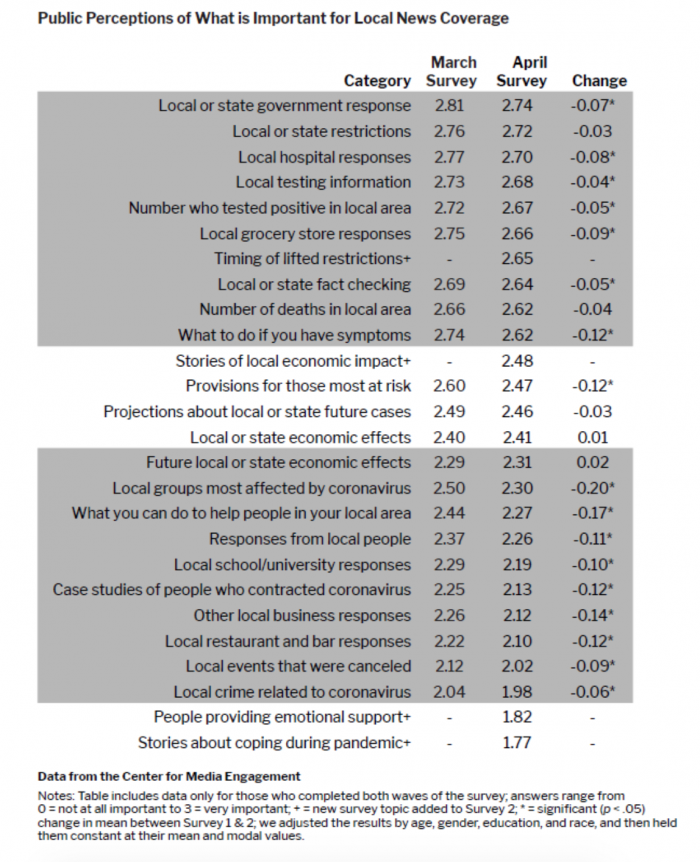As local U.S. newsrooms approach at least three months of covering the coronavirus pandemic and its impact from home, they’ve also had to adapt to their audiences’ needs and interests.
A new report by the Center for Media Engagement at the University of Texas at Austin found that between March and April, local news outlets shifted focus from the government’s response (state and local) to the economic impacts.
CME surveyed 899 people twice, once in March and once in April, and asked them questions about what they wanted to see from news organizations. Respondents were asked to rank the importance of 26 total topics in both months. Of those topics, all but five were ranked of lesser importance from March, showing how interests and priorities have shifted. (The report’s authors note that the sample of people surveyed was “significantly more educated and more white than the U.S. adult Internet population.”)

The study also looked into the news coverage that outlets shared on Facebook changed during this timeframe and found that coroanvirus-related stories in March had high engagement numbers:
- Coverage of government responses significantly declined. In March, 34% of local news outlets’ Facebook posts were about local and state responses to coronavirus. In April, just 20% of posts were about government responses.
- Local news outlets had fewer Facebook posts about the number of people testing positive (14% vs. 18% one month earlier) and school and university responses (7% vs. 10% one month earlier).
- Local news outlets had more frequent Facebook posts about the economic effects of coronavirus (20% vs. 14% one month earlier), the number of deaths (11% vs. 6% one month earlier), and local political disagreement (8% vs. 1% one month earlier).
- Unlike on March 23, there were several differences between broadcast and newspaper Facebook posts. Newspapers reported significantly more on the response of grocery stores, local political disagreement, and economic effects and projections than TV news. Facebook posts focused more on positive tests than did newspaper posts.
There was often a mismatch between what audiences deemed important and what news organizations reported and posted to social media:
When we compared the coverage to what people said they wanted from local news, we found that audiences desired, and local newsrooms provided, information about how local and state governments are responding, the number testing positive in a local area, and the number of deaths in a local area. Audiences were less interested in coverage of coronavirus-related crime, and newsrooms did not share many Facebook posts on this topic.
Some local newsrooms’ Facebook posts also included topics that audiences did not rate as important, including how non-essential businesses (e.g., gyms, churches, etc.) are responding to the coronavirus and the local economic effects and projections. Audiences did want information about testing and local hospital and health care facility responses, yet there were fewer posts about these topics compared to others. These topics represent an opportunity for newsrooms to rethink coverage to meet audience needs.
Read the full report here.
Leave a comment